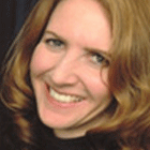(This story first appeared in the April 2015 issue of the Anglican Journal.)
The Rev. Eric MacDonald, a retired Anglican priest who lives in Windsor, N.S., said he was “overjoyed” by the Supreme Court of Canada’s decision to legalize doctor-assisted suicide. “I think it was about time,” he said, but added, “For Elizabeth, it is 10 years too late.”
Elizabeth was MacDonald’s wife, who in 2006, when she was facing rapidly progressing paralysis due to multiple sclerosis (MS), tried to take her own life. “She was asleep for about 48 hours, but she woke up again and was disappointed about that.”
She was so determined to die that later she asked MacDonald if he would accompany her to Switzerland, where assisted suicide has been legal since 1942. In June 2007, when Elizabeth was 38, they travelled to Zurich, seeking the help of Dignitas, an organization that offers medically assisted suicide.
Elizabeth was diagnosed with primary progressive MS in 1998. What began with a bit of numbness on one side of her face in September moved steadily, so that by the time she saw a neurologist in November, she was already having trouble walking. The couple knew people struck by the same disease, including one of their neighbours, who had been completely paralyzed and had a feeding tube surgically installed into her stomach, MacDonald recalled. “She could not move or speak or indicate what her wishes were. Her body…was spastically being bowed backwards on the bed. She couldn’t do anything at all.”
From the early days of her diagnosis, his wife had said, “If this is primary progressive, I’m not sticking around. I’m not going to be trapped in my own body.”
The uncertainty of when or how she could die and how it might involve him and the rest of their family preyed on her mind over the years of her illness, and may have contributed to her health’s steady decline, he said. “If she had less stress and was confident that when things got too bad, she had an escape clause, she could have been quite comfortable about things,” he said. The high court’s ruling “will give security to people like Elizabeth, who need that comfort…that when things are just too bad, they can leave.”
MacDonald said his own views on the issue were established long before it confronted his own family. “As a priest, I had seen a number of people die and many of them, I am afraid, in misery.”
When they travelled to the clinic in Zurich, MacDonald said Elizabeth first met with a doctor who made sure she was really ill and that she indeed wanted to die. By that time, she was paralyzed from her arms down and her voice was becoming gravelly. The next day they went to a Dignitas apartment, where MacDonald said the staff talked with them for about three hours as a part of the process. “They kept repeating along the way, ‘Mrs. MacDonald, you don’t have to do this. You can pack up and go right straight back home and nobody will think any less of you.’ She said, ‘No, this is what I’ve come to do. I’m not going back home.’ ” The staff explained that she would be given barbiturates that would kill her if she drank the mixture. When she said she understood, they gave her the glass. “So she lay on the bed and she lay in my arms as she died, and that’s what she wanted to do,” MacDonald said.
Dignitas then notified authorities and MacDonald said that within 15 minutes, a doctor and two assistants, the public prosecutor, an assistant and two police detectives were in the room. The process was well documented in Switzerland and included a video recording of Elizabeth’s stated intent, but MacDonald faced questions on his return to Canada.
Elizabeth had thanked Dignitas in her obituary, and the Euthanasia Prevention Coalition asked the RCMP in Nova Scotia to investigate. The RCMP asked MacDonald to come into their station for an interview. An officer asked him to recount the story of his relationship with Elizabeth and how it ended. He was asked specifically about whether she had made her own arrangements for the trip. About a week later, the same officer came to his house to tell him that no charges were going to be laid.
MacDonald said his belief in an individual’s right to choose how they will die didn’t conflict with his faith or role as a priest, but the church’s stance on the issue has. “I’ve been angry with the church, to be quite frank, because the church has had a discussion paper in existence [for years], but it hasn’t done anything about it.” (In 2000, the church published the report, Care in Dying: A Consideration of the Practices of Euthanasia and Physician Assisted Suicide.) MacDonald said he was outraged by the report’s suggestion that assisted suicide is a failure of community. “That really means that people who are helped to die are really being abandoned by their community, and I think that’s a horrible thing to say.” In Elizabeth’s case, he said, “For me to have refused and said, ‘There’s no way I’m going to assist you in this-there’s no way I’m going to accompany you to Switzerland’-that would have been, to me, abandonment.
“It’s a human being’s right, it seems to me, to have a choice about how to die,” MacDonald said. “Of course, it is compassionate, but it is not compassion that drives this; it is a sense that it is a person’s right. It’s not that we’re doing something for somebody, but [that] we are allowing somebody to do something for themselves, even if they need assistance to do it.”







